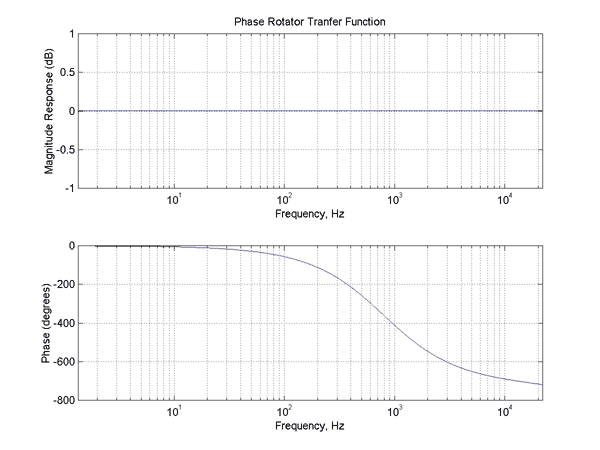The first set of research data I post in the peer reviewed journal of Audio Engineering Society was authored (in part) by Professors Lipshitz and Vanderkooy. As their title indicates, they teach at the University (Waterloo). They are luminaries in audio industry especially when it comes to matters related to signal processing. These are the names we need to know and not throw them in some random pile of "engineers."
https://uwaterloo.ca/audio-research-group/people-profiles/john-vanderkooy
John Vanderkooy
BEng, PhD (McMaster) – Distinguished Professor Emeritus
PHY 205 Ext: 32223 Email:
[email protected]
Research Topics: Acoustics, Audio and Electroacoustics, Digital Signal Processing as it applies to audio; Diffraction and Radiation of sound by loudspeakers; Electro-acoustic Measurement Techniques.
Present Research Activities: Active acoustic absorbers, Noise measurements of Wind Turbines, the Acoustics of the trumpet. There is always an interest in measurement techniques
Measurement systems of various types normally work satisfactory when the system under test is truly linear, but nonlinearities can show up surprising differences. Maximum-length sequence (MLS), swept-tone and pulse systems are under study for the characterizations of transducers and acoustic spaces. As well as experiments, computer simulations are used which allow better control of the nonlinearities.
The diffraction of sound by loudspeaker cabinets has been studied with a view to producing simple predictive methods for the effect of a box. A computer algorithm has been applied to solve the Helmholtz sound equation for various shapes, and theoretical analyses show some asymptotic results that are in general agreement with experiment. Currently the diffraction from cabinet edges is under study. The geometrical theory of diffraction is easily modelled on a computer and is efficient enough that second-order diffraction effects can be included. Low-frequency asymptotic results are being used to correct near-field measurements.
Digital Signal Processing is done in our group with an express emphasis on acoustics and audio. Projects include band splitting for multi-way transducers, active noise cancellation, and measurement systems.
Some significant past papers
U.P. Svensson, R.I. Anderson, J. Vanderkooy. Analytical Time-Domain Model of Edge Diffraction, in Proceedings of NAM98, Nordic Acoustical Meeting, Stockholm, Sweden, September 7-9, 269-272 (1998).
Nonlinearities in Loudspeaker Ports, Presented at 104th AES Convention, Amsterdam, May 16-19, 1998. Preprint 4748, 32 pages.
U.P. Svensson, R.I. Anderson, J. Vanderkooy. A Time-Domain Model of Edge Diffraction Based on the Exact Biot-Tolstoy Solution, in the Technical Report of the Institute of Electronics, Information and Communication Engineers, EA97-39, Tokyo, Japan, September 26, 9-16 (1997).
J. Vanderkooy. Aspects of MLS Measuring Systems. J. Audio Eng. Soc. 42, 219-231. (1994)
S
.P. Lipshitz, R.A. Wannamaker and J. Vanderkooy. Quantization and Dither: A Theoretical Survey. J. Audio Eng. Soc. 40, 355-375. (1992)
S.P. Lipshitz, J. Vanderkooy and R.A. Wannamaker. Minimally-audible noise shaping. J. Audio Eng. Soc. 39, 836-852. J. (1991)
Vanderkooy. 1991. A simple theory of cabinet edge diffraction. J. Audio Eng. Soc. 39, 923- 933.
J. Vanderkooy and S.P. Lipshitz. 1990. Uses and abuses of the energy-time curve. J. Audio Eng. Soc. 38, 819-836.
----
https://uwaterloo.ca/audio-research-group/people-profiles/stanley-p-lipshitz
Stanley P. Lipshitz
BSc (Natal), MSc (South Africa), PhD (Witwatersrand) – Professor Emeritus
Lab: PHY 205 Ext: 33755 Email:
[email protected]
Research Topics : Audio and electro-acoustics; Digital signal processing for audio; Diffraction and radiation of sound by loudspeakers; Electro-acoustic measurement techniques, Dither in image processing.
Present Research Activities: Both theoretical and experimental investigations are being made into the low-frequency radiation and diffraction of sound by loudspeakers. These are based on the use of the Helmholtz boundary integral formulation, and approximations thereto such as the Rubinowicz diffraction integral. It is hoped that this will lead to improved low-frequency measurement procedures in reverberant rooms.
The use of analogue as well as digital dithering techniques in digital audio, and digital signal processing in general, is being investigated both theoretically and experimentally. Dither can eliminate errors due to data quantization. Spectrally shaped dither signals and the design of dithered noise-shaping quantizers are specific current interests.
The application of digital signal processing techniques to audio promises to revolutionize the field in the next decade. We are pursuing investigations in such areas as room deconvolution, adaptive equalization, and surround- sound reproduction.
Some significant past papers
S.P. Lipshitz and J. Vanderkooy. 1983. A family of linear-phase crossover networks of high slope derived by time delay. J. Audio Eng. Soc. 31, 2-20.
J. Vanderkooy and S.P. Lipshitz. 1987. Dither in digital audio. J. Audio Eng. Soc. 35, 966-975.
J. Vanderkooy and S.P. Lipshitz. 1989. Digital dither: Signal processing with resolution far below the least significant bit. Proc. AES 7th International Conference "Audio in Digital Times", Toronto, Canada, May 14-17, 1989.
J. Vanderkooy and S.P. Lipshitz. 1990. Uses and abuses of the energy-time curve. J. Audio Eng. Soc. 38, 819-836.
S.P. Lipshitz, R.A. Wannamaker, J. Vanderkooy and J.N. Wright. 1991. Non-subtractive dither. Proc. 1991 IEEE ASSP Workshop on Applications of Signal Processing to Audio and Acoustics, New Paltz, NY, October 20-23, 1991.
S.P. Lipshitz, J. Vanderkooy and R.A. Wannamaker. 1991. Minimally audible noise shaping. J. Audio Eng. Soc. 39, 836-852.
S.P. Lipshitz, R.A. Wannamaker and J. Vanderkooy. 1992. Quantization and dither: A theoretical survey. J. Audio Eng. Soc. 40, 355-375.
----
Their work on dither was so significant that chances are really good that the products you use to listen to music has the results of their work in it! (TPDF dither)
Now, it doesn't mean you automatically agree with both of them. You can dispute what they say but you need to rise up to their level of knowledge. The papers are full of mathematics and deep level of analysis. So this is not a task anyone should take lightly.

So let's be done with "what do engineers know" type of comment. Do a bit of work on who these authors are, what their work has been, etc. If that is too hard to do, just ask and I will be happy to explain.



